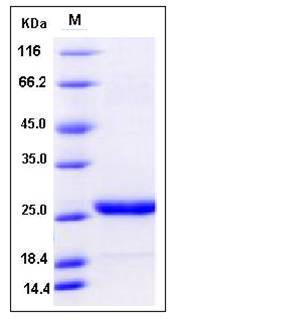Mouse PRL / Prolactin Protein (His Tag)
AV290867,Prl1a1
- 100ug (NPP1578) Please inquiry
| Catalog Number | P50367-M08B |
|---|---|
| Organism Species | Mouse |
| Host | Baculovirus-Insect Cells |
| Synonyms | AV290867,Prl1a1 |
| Molecular Weight | The recombinant mouse PRL consists of 207 amino acids and has a calculated molecular mass of 23.8 kDa. It migrates as an approximately 26 kDa band in SDS-PAGE under reducing conditions. |
| predicted N | Met |
| SDS-PAGE |  |
| Purity | > 92 % as determined by SDS-PAGE |
| Protein Construction | A DNA sequence encoding the mouse PRL (P09411) (Leu 32-Cys 228) was expressed,with an initial Met at the N-terminus and a polyhistidine tag at the C-terminus. |
| Bio-activity | |
| Research Area | Cardiovascular |Angiogenesis |Growth Factor & Receptor |Other Growth Factors & Receptors |Other Growth Factors |
| Formulation | Lyophilized from sterile 20mM Tris, 500mM NaCl, pH 7.4, 10% glycerol 1. Normally 5 % - 8 % trehalose and mannitol are added as protectants before lyophilization. Specific concentrations are included in the hardcopy of COA. |
| Background | |
| Reference |
